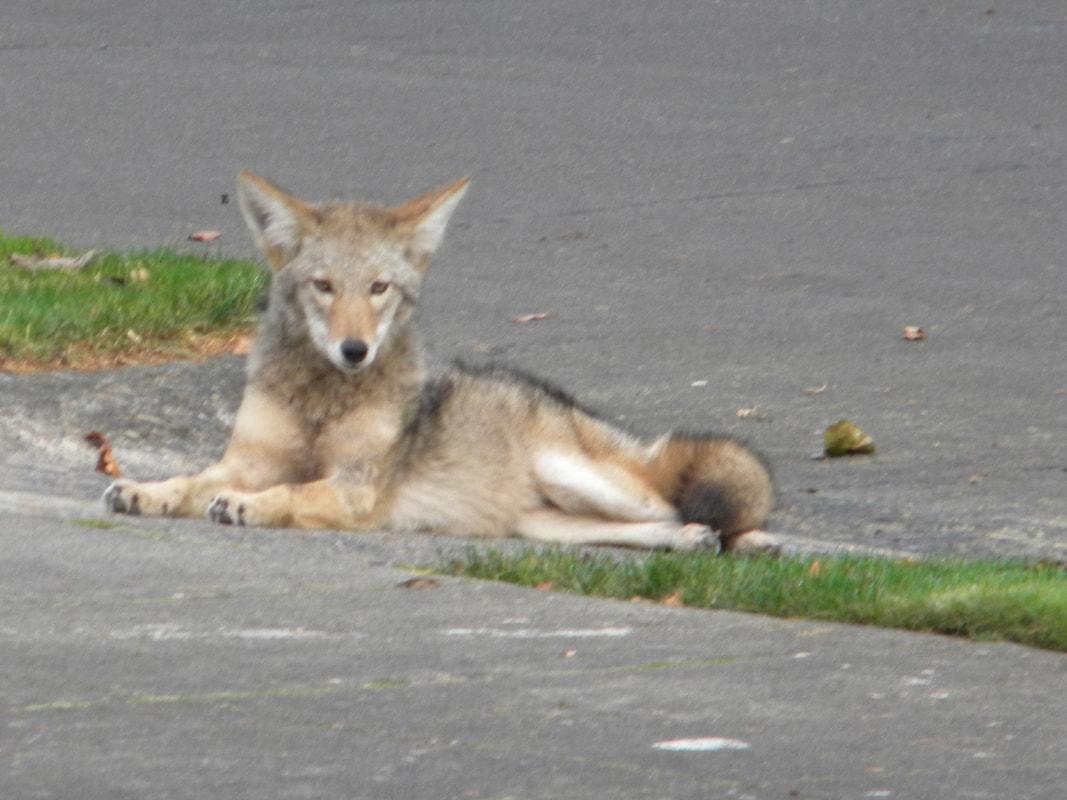“Neighbors, coyote sighting, NE 33rd at Going at 7:42am today, October 24. Heading confidently south on 33rd…absolutely unphased by passing traffic. Please keep your pets inside!” Being Neighborly – Concordia Facebook post, October 24th

Reactions to social media posts like this one range from enthusiasm, to fear, to curiosity. Some people share a link to portlandcoyote.com, the website for Portland Urban Coyote Project.
Portland Urban Coyote Project
Portland Urban Coyote Project (PUCP) is a citizen-science initiative started in reaction to an “eruption of coyote sightings in the NE Alameda neighborhood in 2010,” according to one of the project’s founders and current Project Advisor, Barbara Brower. PUCP, currently led by Zuriel Van Belle, is made up of researchers affiliated with Portland State University and Oregon State University who work in cooperation with the Portland Audubon and Oregon Department of Fish and Wildlife.
The three major goals of PUCP are to provide up-to-date information about living with coyotes, collect and map coyote sightings in the Portland metropolitan area, and conduct in-depth analyses of coyote sighting data and report on its findings. More specifically, the project aims to “help people be better informed, less afraid, and more appreciative,” says Brower.
Brower has lived in the Alameda neighborhood since 1994 and was a Portland State University geography professor for 25 years before retiring recently. She said that although “people have been trying to kill off coyotes for 200 years, they are here, were here, and will stay here” living amongst us and that we need to “figure out how to coexist.”
What does co-existing with coyotes mean in an urban environment, such as the Concordia neighborhood, where sightings are frequent?
How to Identify a Coyote
First, it’s important to accurately identify a coyote. According to the interactive tutorial on the PUCP website, a coyote (versus a fox or dog) can be identified by:
- A tail that doesn’t touch the ground and that looks like a paintbrush with a tip dipped in black ink
- Ears that are large and triangular
- A weight of 25–40 pounds
Coyotes mate for life and typically have one litter every year or every other year. They often travel in packs in a family unit with their growing offspring. Although urban coyotes can kill backyard chickens and unsupervised small pets, there have been only two known fatalities of humans ever reported in North America.
Tips for Coyote Safety
A few key points to remember if you see a coyote:
- Never feed a coyote, even by accident; make sure to secure garbage and compost.
- Don’t approach coyotes, instead haze them (make loud noises) if they come too close.
- Supervise your pets when they are outside.
Due to budget constraints, PUCP has yet to conduct research on whether the Portland coyote population is increasing (most likely; yes), their lifespan (most likely; about 10 years), or their main food source (most likely; rats). These projects may be done in the future if PUCP is able to secure additional funding.
If you are interested in learning more, reporting a coyote sighting, sharing a coyote photo or donating to Portland Urban Coyote Project, please visit PortlandCoyote.com.
Jordana Leeb is a longtime Concordia resident who i s passionate about the neighborhood, its residents and trees. She lives with her partner and dog on a street she calls home. You can see a film about her street and Concordia at Tinyurl.com/Diaryofastreet.